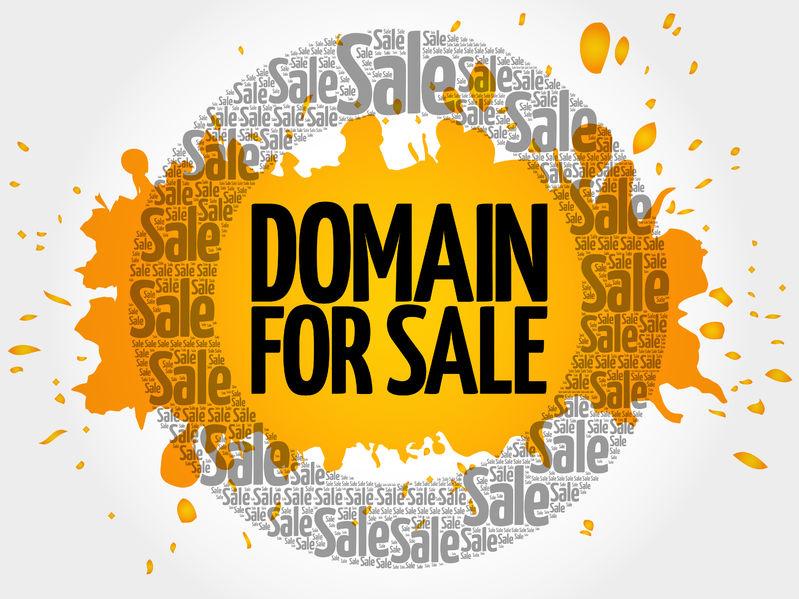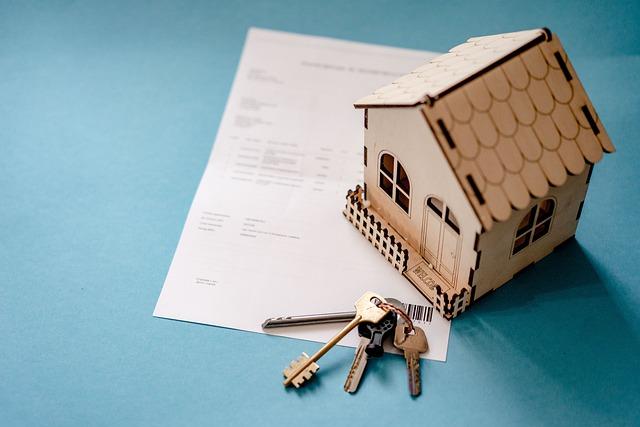Table of Contents
- Exploring the Landscape of Domain Marketplaces
- Key Features to Look for in a Domain Selling Platform
- Strategies for Maximizing Your Domain Sales Potential
- Understanding Domain Valuation and Pricing Trends
- Navigating Transactions Safely in Domain Marketplaces
- Q&A
- In Retrospect
Exploring the Landscape of Domain Marketplaces
The domain marketplace is a dynamic ecosystem where digital assets are bought and sold, giving both seasoned investors and newcomers the opportunity to capitalize on the value of premium domains. One of the essential aspects of navigating this landscape is understanding the various types of marketplaces available. These platforms range from established giants to specialized niche sites, each catering to different types of users. Here are some categories you might explore:
- Auction Platforms: Websites like GoDaddy Auctions and NameJet allow users to bid on domains, often featuring expired domains that can be highly sought after.
- Brokerage Services: Companies that facilitate sales on behalf of domain owners, such as MediaOptions, can be ideal for high-value domains that require a more personalized selling approach.
- Marketplace Listings: Sites such as Sedo and Flippa enable sellers to list their domains for a fixed price, appealing to casual buyers and sellers.
When engaging with these marketplaces, it’s crucial to consider the factors that influence a domain’s value. Several elements come into play, including:
- Keyword Relevance: Domains with popular keywords are more likely to attract traffic and sell for a higher price.
- Brandability: A memorable and brandable domain stands out, making it more attractive to potential buyers.
- Length: Shorter domains are often more valuable because they are easier to remember and type.
Successful domain selling also involves strategic pricing. Utilizing tools that provide market analysis can help set realistic expectations. Below is a simple overview of common pricing strategies you might consider:
| Pricing Strategy | Description |
|---|---|
| Fixed Price | A clear price point for instant buy. |
| Auction | Allow buyers to bid, potentially driving higher prices. |
| Negotiation | Open to offers, creating a dialogue for pricing. |


Key Features to Look for in a Domain Selling Platform
When exploring various platforms for selling domains, consider the user interface as a crucial feature. A well-designed platform should be intuitive and easy to navigate, enabling sellers to list their domains without unnecessary complications. Look for features such as drag-and-drop lists, streamlined dashboards, and clear categorization of the sales process. The simpler the access to features like pricing tools and domain analytics, the more efficient your selling experience will be.
Another vital aspect to evaluate is the marketing support offered by the platform. An effective selling venue should provide tools that enhance visibility and reach potential buyers. Key components to look for include:
- SEO optimization: The platform should have built-in SEO features to boost listing visibility in search engines.
- Email marketing tools: Options that allow you to reach a broad audience through targeted email campaigns.
- Promotional strategies: Resources like featured listings, social media integrations, and advertising spots on high-traffic areas of the site.
consider the transaction security and payment options provided by the platform. A reputable domain selling site should ensure that transactions are conducted safely, protecting both buyers and sellers. Look for platforms that offer features such as:
- Escrow services: To facilitate secure transactions and hold funds until both parties meet their obligations.
- Multiple payment methods: Options like credit cards, PayPal, and cryptocurrency can appeal to a wider audience.
- Transparent fee structures: Clear information on any commission or listing fees to avoid unexpected surprises.


Strategies for Maximizing Your Domain Sales Potential
To effectively enhance the appeal of your domains in the marketplace, it’s crucial to research and understand the competition. Analyze domain sales within your niche and determine what makes certain domains sell successfully. Look for patterns such as keywords, lengths, and extensions that are commanding higher prices. Incorporating these insights can help you position your listings with a more strategic approach. Remember, a domain name isn’t just a URL; it’s a powerful branding tool.
Another effective approach is to invest in marketing for your domains. Utilize social media platforms, SEO techniques, and email campaigns to reach a wider audience. Tailor your marketing strategy based on the target market for each domain. For instance, if you own a tech-related domain, engage with tech forums and communities. Consider the following promotional strategies:
- Creating engaging content that highlights the benefits of your domain.
- Leveraging paid advertisements specifically targeting interested buyers.
- Networking with industry influencers to endorse your domain.
Additionally, setting the right price is critical to your sales strategy. When pricing your domain, consider its market value, demand, and potential buyer’s perceived value. Use price comparison tools to ensure alignment with current market trends. An effective pricing strategy could look something like this:
| Domain Type | Average Market Price | Liquidity Potential |
|---|---|---|
| Short Brandable | $3,000 - $10,000 | High |
| Keyword-Rich | $500 - $5,000 | Medium |
| New Extensions | $100 - $1,000 | Low |
By following these methods, you can maximize your domain sales potential and ensure that you attract the right buyers effectively. Remember, the key to success in the domain marketplace lies in a unique approach, market awareness, and effective promotional strategies.


Understanding Domain Valuation and Pricing Trends
When navigating the realm of domain sales, understanding the intricacies of domain valuation is crucial for both sellers and buyers. A domain’s worth can be influenced by several factors, including its length, keyword relevance, and extension. For instance, domains with short, catchy names and popular TLDs (like .com, .net, or .org) often command higher prices. Sellers should also consider market demand and the potential for profit when setting a price, as these elements can significantly impact the transaction outcome.
Recent trends in domain pricing indicate a shift towards premium domains, which are typically characterized by their high marketability and brandability. Sales data shows that domains that contain lucrative keywords or align closely with trending industries tend to exceed average pricing. Buyers are increasingly looking for domains that not only provide value today but also promise future returns. Therefore, domains related to emerging markets or technologies can fetch a premium price, reflecting the anticipated demand in respective sectors.
| Domain Type | Average Price Range | Market Demand |
|---|---|---|
| Short Domains (3-4 characters) | $10,000 – $100,000+ | Very High |
| Keyword Rich Domains | $1,000 – $10,000 | High |
| Brandable Domains | $500 – $5,000 | Medium |
| New TLDs | $100 – $1,000 | Low |
Understanding these dynamics not only aids sellers in valuating their domains correctly but also empowers buyers to make informed investments. As shifts in technology and market trends continue to evolve, staying abreast of pricing trends and valuation criteria becomes essential. This knowledge not only enhances negotiation strategies but also ensures that all parties involved can derive the maximum value from their domain transactions.


Navigating Transactions Safely in Domain Marketplaces
Engaging in domain transactions can be a rewarding venture, but ensuring safety during these exchanges is paramount. One effective strategy is to utilize reputable platforms that offer secure transaction processes. Look for marketplaces that provide features like escrow services, which hold funds until both parties fulfill their obligations. This minimizes the risk of fraud and creates a safer environment for buyers and sellers alike.
Before proceeding with a transaction, it’s wise to conduct due diligence on the domain’s history and value. This can include checking the domain’s SEO metrics and ensuring it has a clean history free from penalties or negative associations. Tools like WHOIS Lookup can provide insights into previous ownership and any potential red flags. Additionally, engaging with the community through forums or social media can give you insights from experienced participants about specific marketplaces, enhancing your knowledge and awareness.
always keep communication transparent and documented. Use the marketplace’s messaging system to ensure that all interactions are recorded, safeguarding both parties in case of disputes. Establishing clear terms regarding payment, transfer methods, and timelines is essential. Here’s a quick overview of some essential practices to consider during your transactions:
| Practice | Description |
|---|---|
| Use Escrow Services | Protects both parties until transaction conditions are met. |
| Verify Domain History | Check for any previous ownership issues or penalties. |
| Document Communication | Keep records of all agreements and discussions. |
| Be Clear on Terms | Define payment, transfer methods, and timelines upfront. |
Q&A
Q&A: Selling Domains in the Marketplace
Q1: What is a domain marketplace? A: A domain marketplace is an online platform where individuals and businesses can buy, sell, or trade domain names. These marketplaces provide a space for domain owners to list their domains for sale and for potential buyers to search for the perfect domain that matches their needs.Q2: Why should I consider selling my domain in a marketplace? A: Selling your domain in a marketplace can provide you with broader exposure to potential buyers than trying to sell it on your own. Additionally, established marketplaces often have existing user bases and tools that can streamline the selling process, making it easier for you to connect with interested buyers.
Q3: How do I determine the value of my domain? A: Valuing a domain can be subjective and depends on various factors including its length, keywords, brandability, and market demand. Tools like Estibot or GoDaddy’s domain appraisal can help you get an estimate, but ultimately, the market will dictate the final selling price.
Q4: What are some popular domain marketplaces? A: Some of the most well-known domain marketplaces include:
- Sedo: One of the largest platforms with a global reach.
- Flippa: A marketplace for buying and selling a range of online assets, including domains.
- GoDaddy Auctions: Part of GoDaddy, this platform is popular for a large audience of buyers.
- NameJet: Focused more on premium domains and expired domains.
- Afternic: Owned by GoDaddy, it offers a wide range of domains with a user-friendly search tool.
Q5: What are the fees associated with selling a domain in a marketplace? A: Fees can vary significantly depending on the marketplace. Some may charge a flat listing fee, while others take a commission from the sale price. Always check the fee structure before listing your domain. It’s essential to factor these costs into your pricing strategy.
Q6: How do I effectively list my domain for sale? A: To create an effective listing, ensure you include a clear and descriptive title, highlight the benefits of the domain, and justify its price based on your valuation research. Additionally, consider using keywords that potential buyers might search for, and make your listing visually appealing to stand out.
Q7: Can I sell a domain that I just purchased? A: Yes, you can sell a domain shortly after purchasing it, but keep in mind that domain marketplaces typically prefer domains that have been held for a certain period. Additionally, it’s essential to ensure that the domain isn’t subject to any restrictions that might affect your ability to sell it.
Q8: What should I do if my domain doesn’t sell? A: If your domain doesn’t sell, consider re-evaluating your listing. You might need to adjust the price, enhance the marketing description, or list it on additional marketplaces. Additionally, consider holding onto the domain for a longer period, as market conditions can change and demand may increase.
Q9: How can I increase the chances of selling my domain quickly? A: To increase your chances of a quick sale, ensure your pricing is competitive, market your domain effectively on social media, and engage in relevant online communities. Creating a compelling listing and providing value to potential buyers can also expedite the selling process.
Q10: Are there any risks involved in selling domains? A: Yes, there are risks involved, such as potential scams or buyers backing out of deals. It’s crucial to use secure payment methods, such as escrow services, to protect yourself and ensure a smooth transaction. Additionally, be wary of unsolicited offers that seem too good to be true.
By understanding the nuances of domain marketplaces, sellers can navigate this dynamic landscape with greater confidence and increase their chances of connecting with the right buyers. Whether you’re looking to sell a single domain or a portfolio, the right approach can lead to successful transactions.

